A niece of mine has just moved from her native Belfast to begin university in Leeds. Before the switch, she had been apprehensive about the questions, assumptions, comments, and assertions about Northern Ireland she might meet – about the violence, the sectarianism, the politics. My niece is bright, and engaged, but she was born in this century. She has lived her life in peace. She is not the expert on the history of Northern Ireland that people from outside it might expect her to be. But all the same, she knows enough to say that it’s not as black and white as they might think.
The probing will be more intense this year than others. Northern Ireland has arrived at its centenary under close scrutiny – apropos of Brexit, the Northern Ireland Protocol, and debates over the constitutional status of Northern Ireland within the UK. Depending on who you speak to, the centenary is being celebrated, commemorated, marked, clung to, noted in passing, or ignored completely.
You have to be careful with language when it comes to the centenary; you have to be careful with everything. ‘Portrait of Northern Ireland’, an exhibition at the Golden Thread Gallery in Belfast (until 4 November), chooses its words judiciously, stating plainly in its subtitle what it is not: ‘Neither an Elegy nor a Manifesto’. The phrase is taken from the title of a poem of 1972 by John Hewitt, in which he writes: ‘The careful words of my injunction / are unrhetorical, as neutral / and unaligned as any I know […] they do not pound with drum-beats / of patriotism, loyalty, martyrdom.’ The exhibition – a broad survey of more than 100 works, spanning the past century – takes its lead from these words. Curated by Shan McAnena (and organised through collaboration between the Northern Ireland Office, the Government Art Collection, Arts Council NI, and various galleries and collectors), it takes the visitor on a journey through the artistic life of the country, reflecting on the distinctive character and particular history of the place. It touches on the Troubles: how couldn’t it? But it isn’t filled with murals. It avoids camps. It simply presents the work that has been done here, treading carefully, though not necessarily tiptoeing.
There’s a constant strain of humour, both sinister and playful. The first piece on display, a 1934 travel poster from the Cunard Line, urges people to Come to Ulster; in this context, it can be read as gently teasing those who mistakenly think Ulster and Northern Ireland are interchangeable terms. The poster sets the tone for the first room, which includes work produced in the early years of partition. In much of it there remains the sense of the sort of Irishness conjured by The Quiet Man: lush green fields; honest toil; rambunctious markets; happy farm workers living off pennies and love. There is work here by Paul Henry, a Post-Impressionist landscape artist whose work was featured in many tourist campaigns. But it’s by no means all chocolate-box stereotypes. In Return from Work by Colin Wilson (c. 1931), the labourers emerge from factories and shipyards rather than fields, and we see the importance to Northern Ireland of women on the factory floor in Making Coloured Parachutes (1944), by Tom Carr.
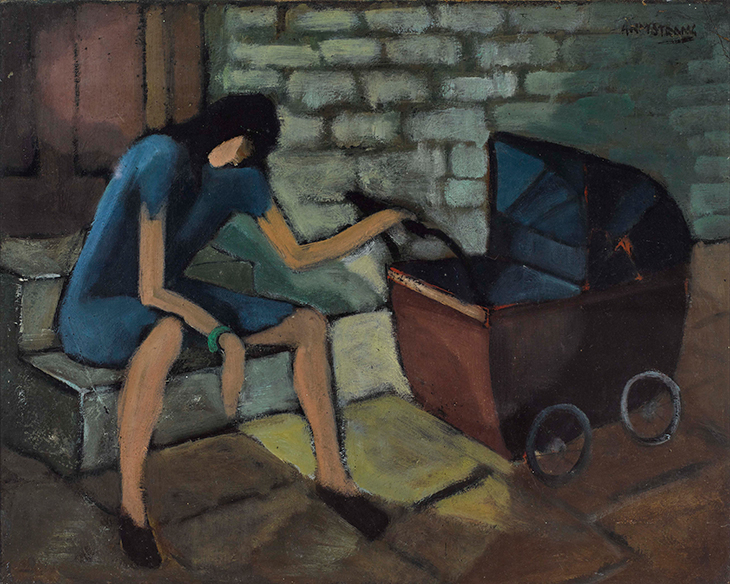
Little Girl with Pram (c. 1947), Arthur Armstrong. © the artist’s estate
While there’s no sign of George Campbell, the other three Belfast Boys, who came together in the north just after the Second World War, do feature. Each brought to bear modern attitudes and European influences on the subjects they found around them. Abstract, brightly coloured block shapes form the background to the apparently indifferent priest flanked by pleading parishioners in Gerard Dillon’s The Confessional (c. 1951). The wildness of Daniel O’Neill’s Landscape, Tyrella (1954) show how his visit to Paris in 1948 exposed him to the influence of the Fauvists. Arthur Armstrong’s Little Girl with Pram (c. 1947) depicts a scene of urban poverty with elongated, angular forms.
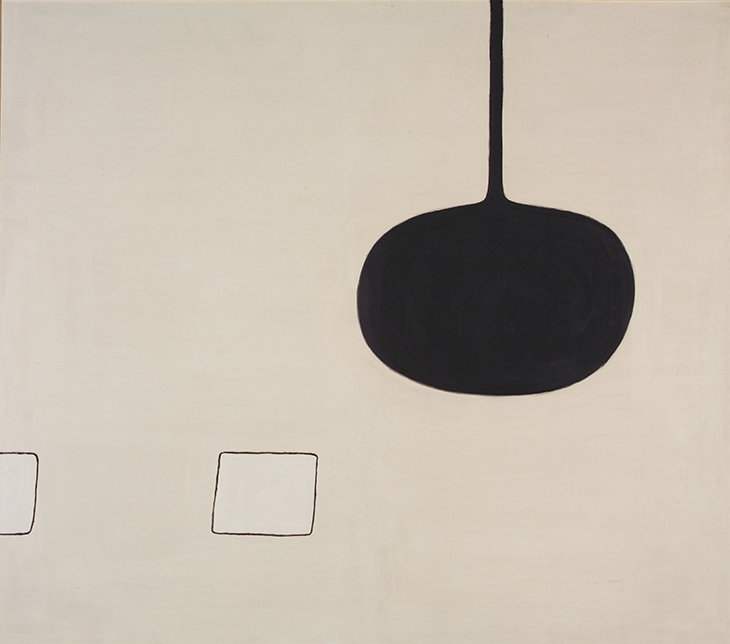
White Shapes Entering (1973), William Scott. Courtesy Museum Services, Fermanagh & Omagh District Council; © Estate of William Scott 2021
Ireland as a whole – and here Northern Ireland is no different – is a land steeped in myth and folklore. The exhibition shows the various ways in which artists in the latter part of the 20th century responded to modernism while carrying that ancient baggage with them. Alicia Boyle’s abstract landscape, Moving Statues, Monkstown, shows a land divided by bold black lines into fields of greens, yellows, browns, and purples, rendered in thick strokes. There’s a spectral bareness in Felim Egan’s Shore Edge, and in John Breakey’s Two Stones on a Beach Full of Stones shards of colour flutter like feathers against a background of striking white, above an area of deep blue. Probably the most internationally celebrated artist to emerge from the north of Ireland, William Scott was among the pioneers of abstraction in the UK. One of his later works, White Shapes Entering (1973), is shown here, featuring one of his trademark frying pans pared to its simplest representation in a study of space, form, and colour.
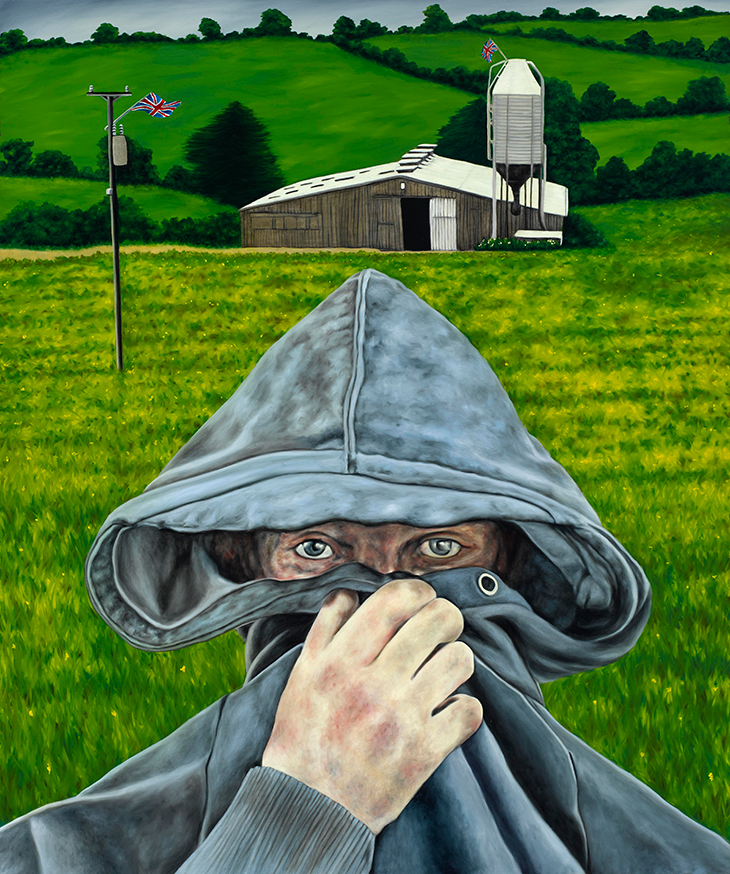
Dissident Grey Hare (2014), Dermot Seymour. © Arts Council of Northern Ireland Collection
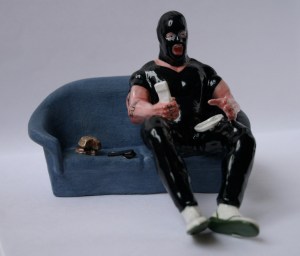
Super Mario (2012), Ursula Burke. © Arts Council of Northern Ireland Collection
Art that reflects on the Troubles is shown towards the back of the gallery, away from the natural light. Some exhibitions on this subject might strive too hard for even-handedness – but this show represents both sides of the conflict through works of telling ambiguity, demonstrating that the same shadow fell over everyone and everything here. Landscapes take on sinister new miens; Willie Doherty’s Ghost Walk III (2016) is a photograph taken within a forest, thin trunks bunched together, bare branches tangling. In other circumstances, this could simply be a study of shape and form; shown here, it could be the site of a victim’s hidden burial place. Dissident Grey Hare by Dermot Seymour (2014) depicts a farm building flying a union flag; in the foreground, as close as possible to the viewer, a man covers his face in a grey hood. We do not know whether the figure is using the farm as a base for sectarian attacks, or planning to launch one on the building and its occupants. Dark humour appears in Ursula Burke’s Super Mario (2012) – a tiny porcelain figure, tattooed and muscular, wearing a balaclava while sitting on a couch in a living room.
The final room of the exhibition shows the work of recent graduates of the Belfast School of Art. It is telling that the works here look more to issues that are either more global or more personal than they are specific to Northern Ireland. Among the best is Oonagh McAteer’s Laney’s Kitchen (2021) – a charming sculpture of an everyday kitchen, bin just emptied, fridge door open, dog’s bowl on the floor. It feels unlikely that Super Mario is sitting in the living room next door. It’s always possible, mind.
Unsurprisingly, there’s no single work here that encapsulates Northern Ireland. There’s one that might come close, though: Colin Watson’s Zebra on Cavehill (1998). Cavehill overlooks Belfast, and is not renowned for its zebras. But here’s one, standing side-on, out of place and yet, in Watson’s depiction, thoroughly at home. Things aren’t so black and white, it seems to say.
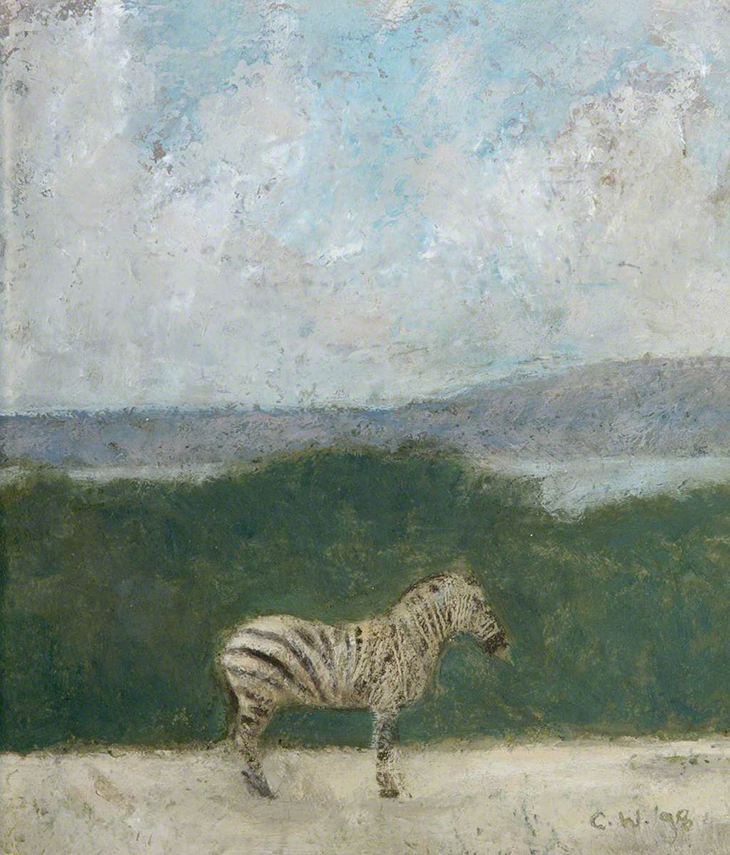
Zebra on Cavehill (1998), Colin Watson. Courtesy the Northern Ireland Civil Service
‘Portrait of Northern Ireland: Neither an Elegy nor a Manifesto’ is at the Golden Thread Gallery, Belfast, until 4 November.
Unlimited access from just $16 every 3 months
Subscribe to get unlimited and exclusive access to the top art stories, interviews and exhibition reviews.


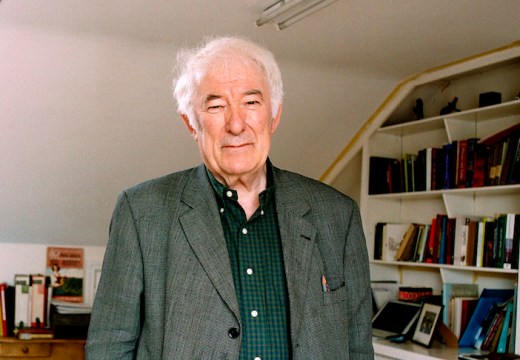
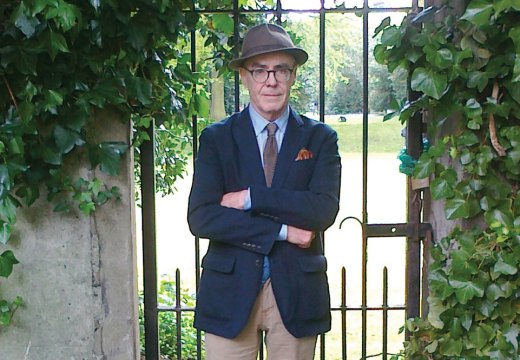
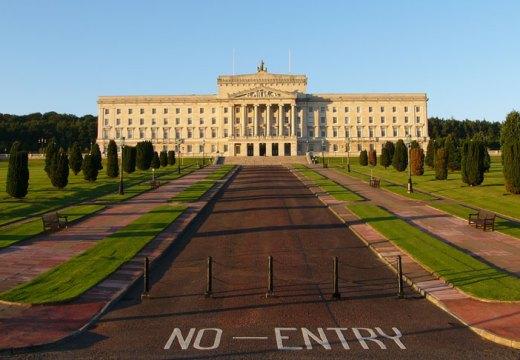









![Masterpiece [Re]discovery 2022. Photo: Ben Fisher Photography, courtesy of Masterpiece London](http://www.apollo-magazine.com/wp-content/uploads/2022/07/MPL2022_4263.jpg)
Has the Fitzwilliam lost the hang of things?